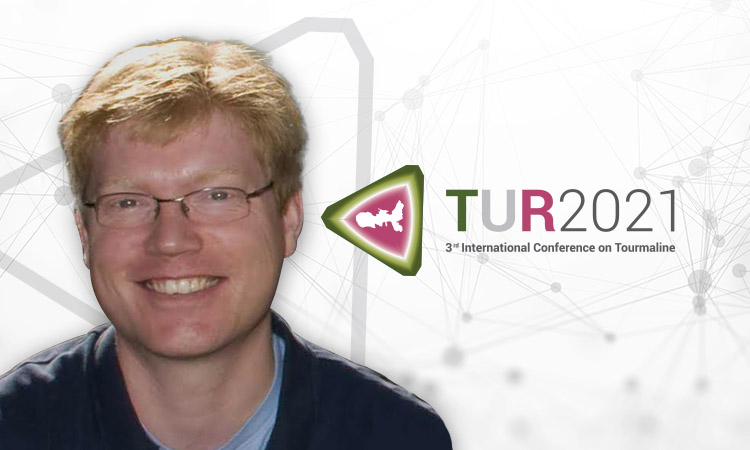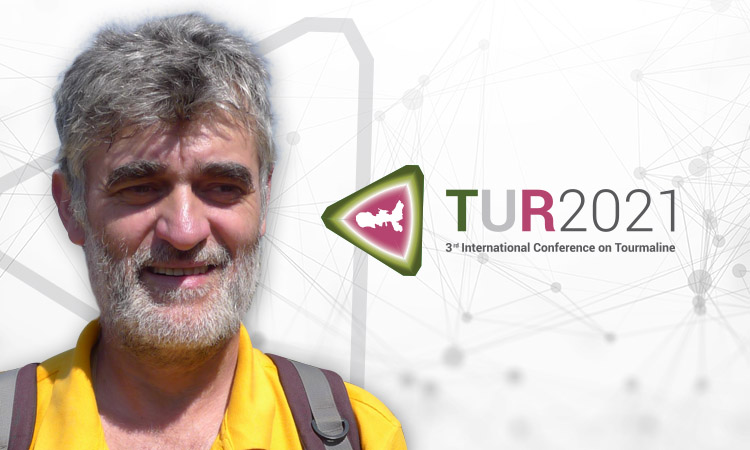Keynote Speakers

Barbara L. Dutrow
Louisiana State University, USA
Barb Dutrow is the Gerald Cire & Lena Grand Williams Alumni Professor in the Department of Geology & Geophysics at LSU. Her research focuses on: computational modeling of heat and mass transport in contact metamorphic systems, and fluid -rock interactions and their impact on mineral nucleation, growth and mineral textures; application of a wide range of analytical techniques for determining the crystal chemistry and petrogenetic signatures of rock forming minerals, particularly tourmaline; and teaching mineralogy. She is a co-author of the 23rd Edition of the Manual of Mineral Sciences (Dana's manual), a past President of the Mineralogical Society of America, and is on the Board of Governors of the Gemological Institute of America. She served as an Associate Editor for American Mineralogist and Reviews of Geophysics, and American Journal of Science.
Talk title: The petrogenetic utility of tourmaline: New insights and applications
Darrell J. Henry
Louisiana State University, USA
Darrell Henry is the Campanile Charities Chair of Geology in the Department of Geology and Geophysics at Louisiana State University, USA. His research interests range from the petrology and geochemistry of the Archean rocks of the northern Wyoming Province (USA) to the mineralogy, crystallography and petrogenesis of petrologically important minerals, especially tourmaline, biotite and Cl-bearing silicate minerals. He is the chair of the International Mineralogical Association Subcommission on Tourmaline Nomenclature.
Talk title: Tourmaline Crystallography, Crystal Chemistry and Nomenclature: Current Status


Brendan M. Laurs
The Gemmological Association of Great Britain, USA
Brendan Laurs (MS, GG, FGA) is editor-in-chief of The Journal of Gemmology published by Gem-A, and is based in southern California, USA. From 1997 to 2012 he was editor of Gems & Gemology at the Gemological Institute of America (GIA) in Carlsbad, California. He is a gemologist and geologist specializing in the formation of colored gemstone deposits (particularly in granitic pegmatites), and has visited numerous gem mining areas in Africa, Asia, Brazil, and the USA.
Talk title: Tourmaline as a Gem: Varieties, Origin Determination and Future Challenges for Gem-testing Laboratories
Horst R. Marschall
Goethe University of Frankfurt, Germany
Horst Marschall is the Wilhelm Heraeus Professor for Deep Earth Processes and Head of Department of the Institut für Geowissenschaften at Goethe Universität Frankfurt. He is also a co-founder and co-director of FIERCE (the Frankfurt Isotope & Element Research Center) and an Adjunct Scientist at the Woods Hole Oceanographic Institution (WHOI). His scientific interests mostly evolve around processes in the crust and upper mantle and are spread between the disciplines of petrology, geochemistry, mineralogy and geochronology. He completed his doctoral degree in 2005 at Universität Heidelberg where he started his research on boron isotopes and on tourmaline, followed by postdoctoral and staff scientist positions at the University of Bristol and WHOI and a steady flow of more tourmaline papers.
Talk title: Tourmaline isotopes: an update for the past decade since the 2011 Elements issue


John F. Slack
U.S. Geological Survey (Emeritus), USA
Memorial University of Newfoundland, Canada
John Slack received his Ph.D. from Stanford University in 1976. His research has focused on the mineralogy and geochemistry of mineral deposits, especially stratabound ores in sedimentary and volcanic terranes. He has worked extensively on tourmaline in hydrothermal deposits and related boron isotope systematics. Other research interests include evidence of early life in Precambrian jaspers, and paleoredox conditions in ancient oceans as constrained by seafloor mineral deposits. He has been Associate Editor of the journals Economic Geology, Canadian Mineralogist, and Geology, and is Chief Editor of the SGA-Springer monograph series on mineral deposits.
Talk title: New insights into the origin of tourmaline in SEDEX and VMS deposits
Vincent J. van Hinsberg
Earth and Planetary Sciences, McGill University, Canada
Vincent van Hinsberg is a petrologist, geochemist and experimentalist at McGill University in Montreal, Canada. In his research, he uses the major and trace element composition of minerals to reconstruct the physical conditons and element mobility in the Earth. In-situ micro-analytical measurements, thermodynamic modeling and element partitioning experiments are principal tools, and tourmaline a favorite mineral to target. His research group applies this methodology to diverse topics including element cycling in subducton zones, early Earth plate tectonics, ore and gem formation, and volcano monitoring.
Talk Title: Systematics in trace element partitioning in tourmaline-bearing systems

Plenary Speakers

Milan Novák
Masaryk University, Brno, Czech Republic
Milan Novák is a professor of mineralogy at the Masaryk University, Brno, Czech Republic. He worked from 1978 as a curator of minerals at the Moravian Museum, Brno prior to joining the university in 1999. He received a PhD from Charles University, Prague in 1988, and in 1991-93 he was a postdoctoral fellow of Professor Petr Černý at the University of Manitoba, Winnipeg. His areas of interest include mineralogy, petrology and geochemistry of granitic pegmatites and crystal chemistry of minerals as a tool for understanding their origin. Milan Novák was Chairman of the Subcommitiee on Tourmaline Nomenclature of the IMA (2005-2017).
Talk Title: Tourmalines and pegmatites
Federico Pezzotta
Natural History Museum of Milan, Italy
Federico Pezzotta, mineralogy curator since 1998 at the Natural History Museum of Milan, Italy, graduated in geological sciences and got a doctorate degree in isotope geochemistry. He was honored in 2003 with the name of the new mineral and new gemstone pezzottaite, from Madagascar. In the period 2013-2018, he was the Chairman of the IMA-Museum Commission, and since March 2019 he is the President of the GML-AIM (Lombardy Mineral Club – Italian Association of Mineralogy). As an expert in mineralogy and petrology of granitic, gem-bearing pegmatites, and gem tourmaline, Federico visited, studied, and performed field and consultant work, in pegmatite fields in Brazil, Italy, Madagascar, Malawi, Myanmar, Nigeria, Ukraine, and Mozambique. As a result of such experience, he produced about 300 publications in international, scientific and popular, magazines.
Talk Title: Elba tourmalines, over two centuries of collecting and researches
